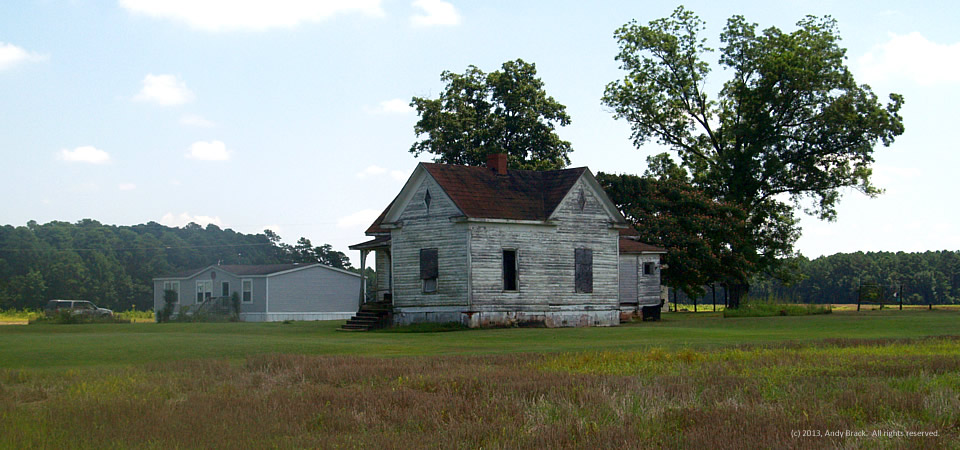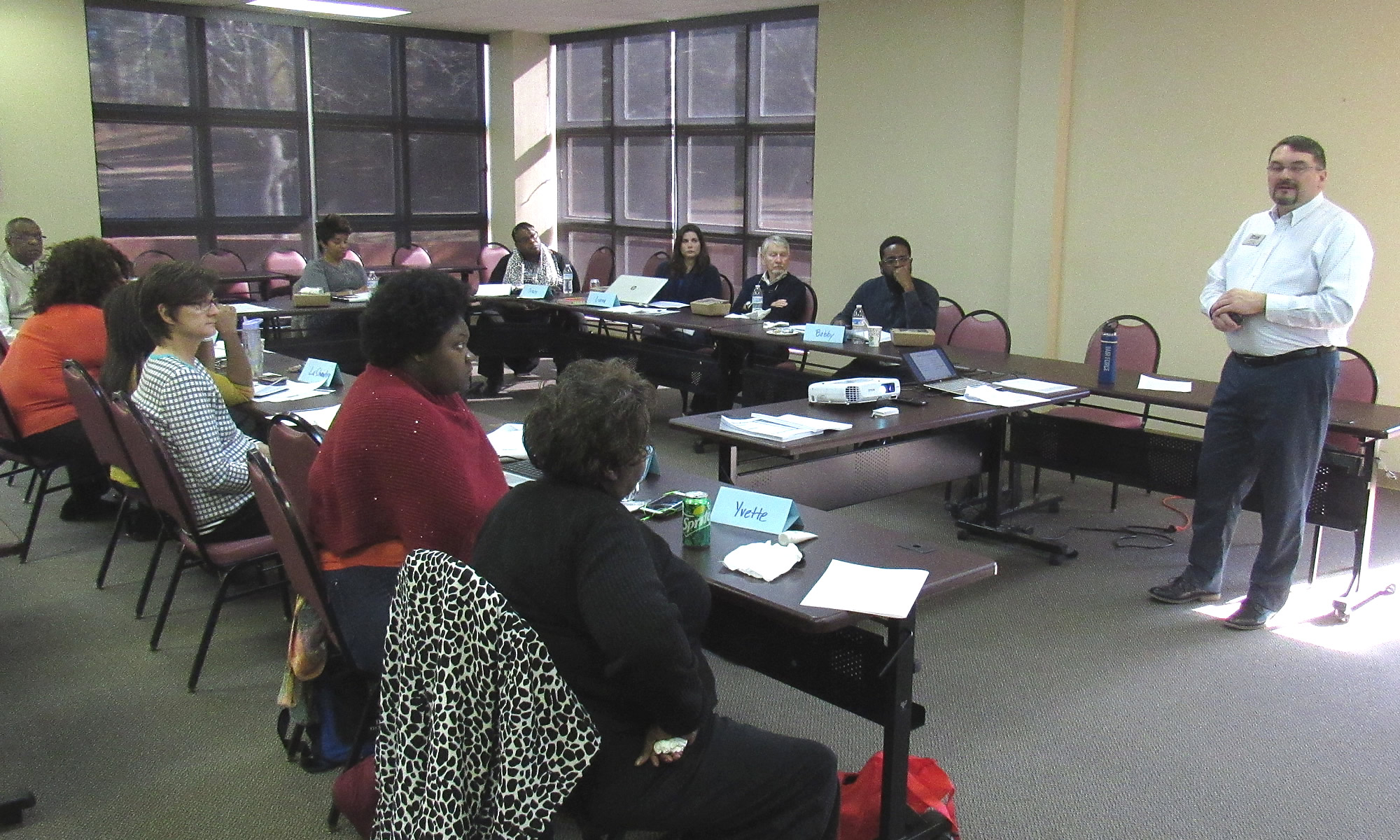
So this is how it is in parts of the rural South — a family’s mobile home is where they live while the old farmhouse they grew up in is next door. These homesteads are just off Interstate 95 outside of Rowland, N.C., near the South Carolina border and its infamous South of the Border attraction.
Rowland had 1,146 people in 2000, including more than 30 percent in poverty. It’s also part of Robeson County, which is considered a majority-minority county (as are about 10 percent in the country) because its populations of native Americans, blacks and Hispancs total more than 50 percent.
In 2012, Robeson County had an estimated 135,496 people comprised of 39 percent American Indians, 32.8 percent whites, 24.7 percent blacks and 8.2 percent Hispanic, according to the Census. Some 30.6 percent of county residents lived at or below the federal poverty level.
Photo taken July 26, 2013, by Andy Brack, Center for a Better South. All rights reserved.

